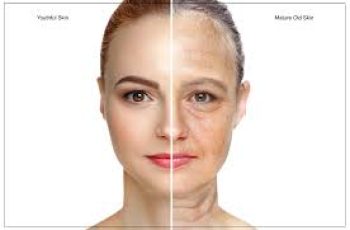
Are You Using Your Moisturiser Correctly?
As temperatures drop and winter sets in, it’s only natural to reach for your favourite moisturiser. The cold air is harsh, and skin starts to feel tight, dry, and uncomfortable fast.
Slathering on your thickest cream may seem like the solution. But what if we told you that you might be using your moisturiser the wrong way? A few small changes to your routine can make a big difference.
Let’s break down how to apply moisturiser properly, when to use it, how to choose the right one, and common mistakes to avoid—so your skin stays soft, smooth, and glowing all winter long.
Step One: How to Apply Moisturiser the Right Way
Applying moisturiser might seem simple, but technique matters. Bad habits or careless application can reduce effectiveness or even cause breakouts.
Start with clean skin. Always cleanse before applying moisturiser. Dirt, oil, and leftover makeup can stop your moisturiser from being absorbed properly.
Use the right amount. Aim for a blob about the size of a 10p coin. More isn’t better—in fact, it can clog pores and leave skin greasy.
Dot it on key areas—your forehead, both cheeks, chin, neck, and upper chest (also known as your décolletage). These spots often show signs of dryness first.
Gently smooth the product into the skin using upward motions. Don’t drag or pull the skin. Upward movements help counteract the effects of gravity over time.
Don’t forget your neck and chest. These areas are just as prone to aging and dryness. They’re often exposed but are easy to overlook in skincare routines.
To finish, lightly pat your skin to help the product absorb. This also boosts circulation and gives the skin a fresh, healthy glow.
Can You Use Your Face Moisturiser as Eye Cream?
Surprisingly, yes—you can, but with caution. If you don’t have sensitive skin or eyes, a gentle moisturiser may double up for the under-eye area.
Use your ring finger to apply moisturiser to the orbital bone (the bony area surrounding your eye socket). This finger naturally applies the least pressure.
Avoid putting product too close to the lash line. Overloading this area can lead to irritation or milia, which are tiny white bumps caused by trapped keratin.
If you experience any irritation, switch to a moisturiser made specifically for the eyes. The skin here is thinner and needs extra care.
When Should You Apply Moisturiser?
The short answer? Morning and night.
Using moisturiser twice daily helps maintain a healthy balance of hydration and oil in the skin. It keeps your skin feeling soft, soothed, and protected.
In the morning, apply moisturiser after cleansing and before sunscreen. Even on cloudy days, harmful UVA rays can damage skin and cause early aging.
Look for a day moisturiser with SPF 30 or higher. This protects your skin from sun damage while keeping it hydrated and balanced.
If your moisturiser doesn’t have SPF, apply sunscreen separately. A spray-on face SPF is a quick and easy fix for busy mornings or reapplication throughout the day.
At night, skip the SPF. Instead, use a richer night cream packed with antioxidants, peptides, and skin-repairing ingredients.
Night moisturisers are usually thicker and more nourishing. They help your skin repair and renew while you sleep.
When you wake up, your skin should feel soft, slightly tacky, and fully hydrated, not dry or greasy. That’s how you’ll know it’s working.
How Do You Know If Your Moisturiser Is Actually Working?
Your skin will let you know. The first sign that your moisturiser is working is comfort—skin shouldn’t feel dry, tight, or irritated during the day.
A good moisturiser balances water and oil levels in the skin. It should leave your face feeling fresh, hydrated, and calm, not sticky or greasy.
If you feel excessively oily, or your skin is flaking or itchy, your current product might not suit your skin type.
Oily skin? You still need moisturiser! Oil and hydration are not the same. Even oily skin can be dehydrated, and skipping moisturiser can make it worse.
Switch to a lightweight, oil-free gel moisturiser that hydrates without clogging your pores. Hydrated skin helps regulate oil production better over time.
If you develop a rash or irritation after using a product, stop using it immediately. You may be reacting to an ingredient.
If irritation continues or worsens, consult a dermatologist or GP for guidance. Never try to “push through” a reaction—it’s not worth the damage.
Can You Use Too Much Moisturiser?
Yes, absolutely! Too much moisturiser can do more harm than good.
Applying too much can clog your pores, leading to breakouts, congestion, and a greasy appearance.
After applying your moisturiser, your skin should feel hydrated and slightly tacky, not slimy. If it’s shiny or sticky long after, you likely used too much.
Always allow your moisturiser to absorb fully before applying makeup or other products. Otherwise, they might not sit well or stay in place.
Using too much is also a waste of money. High-end creams can cost over £100. If you’re using more than a 10p-size dollop every time, that pot won’t last long.
Less is often more in skincare. Trust that a small amount, applied properly, will deliver better long-term results than overloading your skin.
Pre- and Post-Flight Moisturising Tips
Air travel can wreak havoc on your skin. Cabin air is notoriously dry and dehydrating, with humidity levels as low as 10%.
Before your flight, apply a hydrating gel-based moisturiser. This type sinks in fast and doesn’t feel heavy, even after hours in a cramped seat.
During long-haul flights, you might want to reapply moisturiser every few hours. If your skin feels tight or uncomfortable, don’t hesitate to top it up.
Pack a travel-size face mist or moisturising spray in your carry-on. It’s a mess-free, refreshing way to hydrate skin mid-flight.
If your skin tends to get extremely dry, consider applying a nourishing sheet mask or sleep mask while in the air—especially for overnight travel.
After landing, cleanse your skin and follow with your usual skincare routine. This helps your skin recover from dryness, stress, and cabin pollution.
Common Moisturiser Mistakes (And How to Avoid Them)
Even if you’ve been using moisturiser for years, you might be making some small mistakes that reduce its effectiveness.
Mistake #1: Applying to Dry Skin
Always apply moisturiser to damp skin. This helps lock in hydration and makes the product absorb more effectively.
Mistake #2: Skipping SPF
No SPF in your daytime routine? You’re missing a major step. Even winter sun and indoor light can age your skin over time.
Mistake #3: Ignoring Your Neck and Chest
Your neck and décolletage are often the first areas to show signs of aging. Treat them as part of your face and moisturise daily.
Mistake #4: Using the Wrong Formula
Match your moisturiser to your skin’s current needs. Dry? Go for richer creams. Oily? Stick with lighter gels. Sensitive? Choose fragrance-free.
Mistake #5: Not Switching Products Seasonally
Skin changes with the weather. What works in summer might not be enough in winter. Listen to your skin and adjust accordingly.
Final Thoughts: Mastering the Art of Moisturising
Using moisturiser correctly doesn’t require a degree in skincare. But the little details—how much you apply, when you apply it, and what type you use—make all the difference.
Done right, moisturising can help your skin look and feel its best. You’ll see fewer dry patches, less oiliness, and a smoother, healthier appearance.
You’ll also get more value from your products, and potentially avoid common issues like clogged pores, milia, or breakouts.
And let’s be honest—anything that keeps our skin glowing while also saving money (especially during the festive season) is a win in our book!


